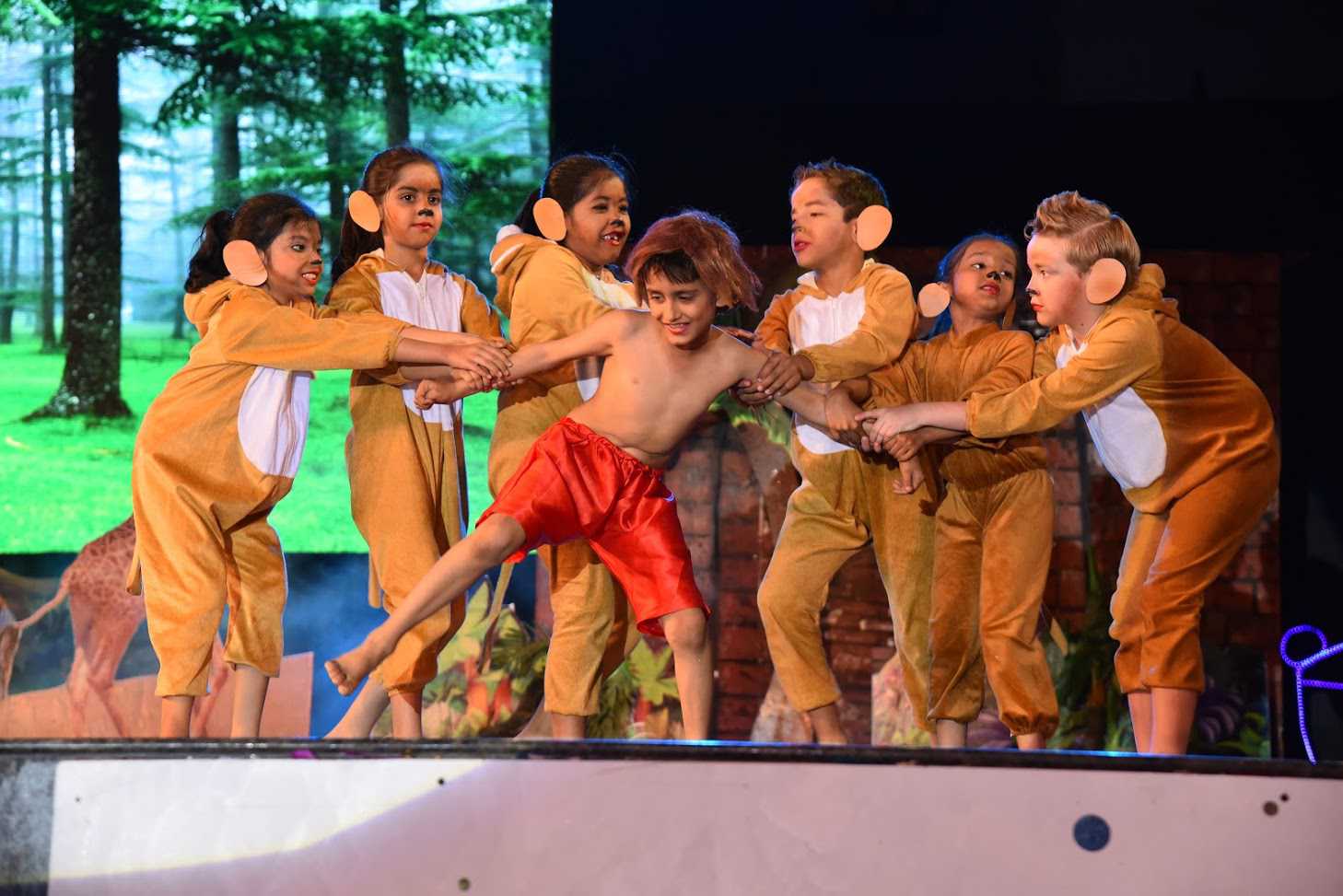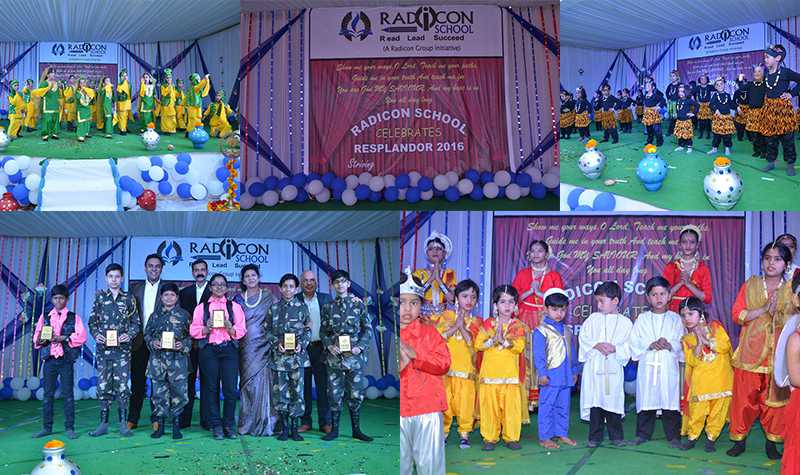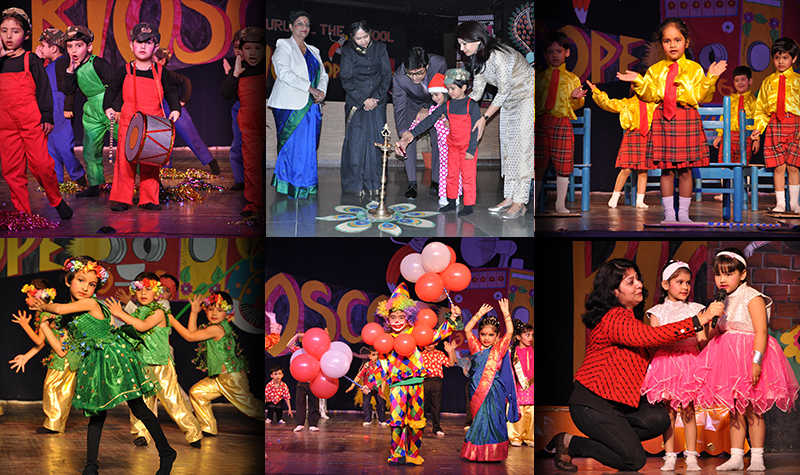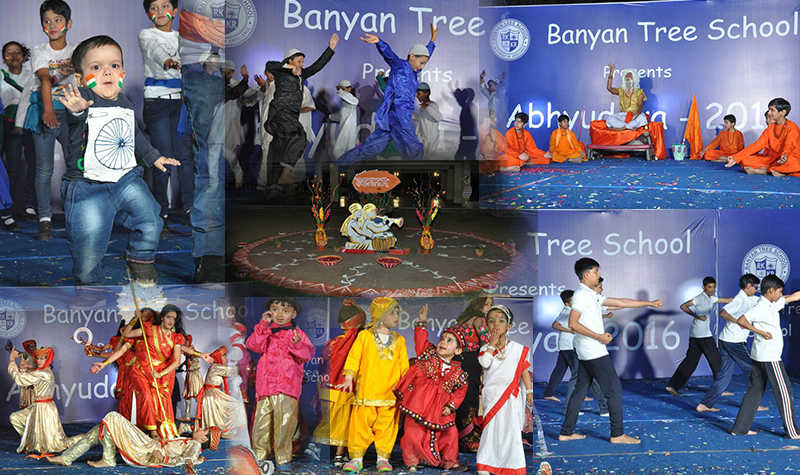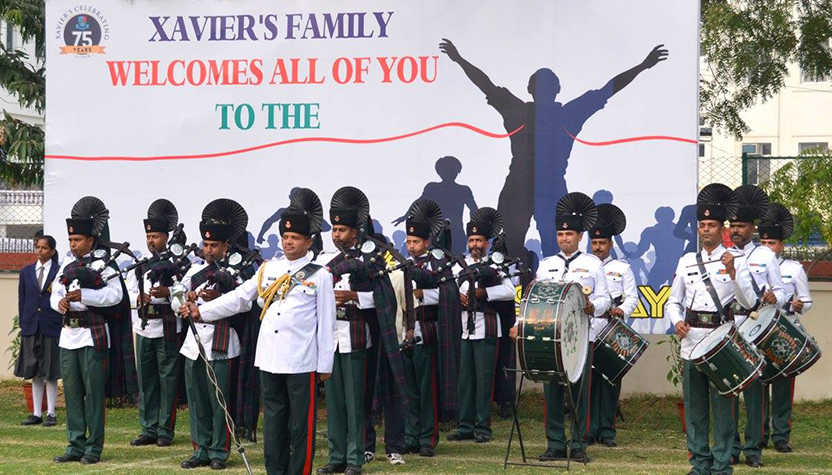Edutainment
Special show by special students wows Jaipur
As much as the students are special so was their performance, although few expected it to be such an outstanding show. Read how students of Disha, a school for special children, proved their mettle.
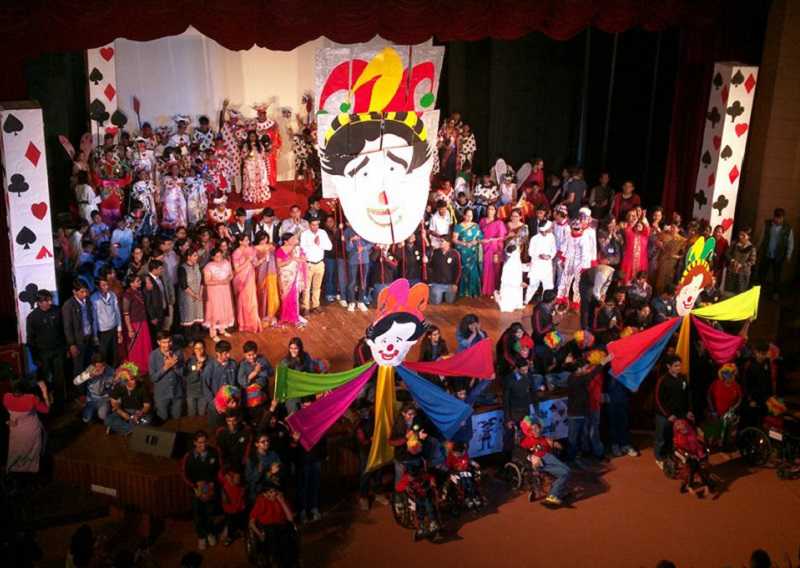
This was not one of those regular annual functions. What was experienced at Birla Auditorium Jaipur on Saturday had six months of hard work written all over it.
Celebrating their school’s 20th anniversary, the students of Disha, A Resource Center for Multiple Disabilities, Jaipur put up a sparkling adaptation of Rabindranath Tagore’s Tasher Desh, wowing their school chums, parents, educators and other people from the city.

Titled ‘Jokers in the Kingdom of Cards’, the play revolved around a prince with a deep desire to escape his royal destiny. In pursuance of it, he lands up on an authoritarian island where people blindly follow rules, who are ultimately invoked by the prince to follow their heart and mind, thus starting a revolution.
As the play unfolded, the audience sat spellbound. Some actors couldn’t walk, others couldn’t talk, yet they tried… and emerged winners. The audience went along, tapping their feet and clapping along with the children.
Bhavya’s father, Hemant Mishra, sat teary-eyed. It had been two years now that his daughter had been at Disha, and the outcome had been beyond expectation, he said. She can now perform onstage!

“What Disha is doing is wonderful; it provides an unexpected platform to special children,” said Arun Dhandhania, an elderly gentleman in the audience. “The teachers here are very dedicated to helping students perform well as all-rounders.”
It wasn’t just the audience that enjoyed the show, but also students from other, mainstream schools like MGD School, Jayshree Periwal High School, Sanskar School, etc. But it wasn’t just for fun that they were here, what the students learnt here is something that we need to advocate to the rest of the society too.

Kshitiz Khandelwal from Jayshree Periwal School, volunteering for a couple of weeks with Disha in the run-up to the show, said that it was ‘love and affection’ that he had learnt from these children, while Pooja Khandelwal, also a volunteer, said she had learnt the value of ‘acceptance in life’.
“It is not sympathy, what these children need is empathy,” Stuti Uppal and Jyotiraditya, wise beyond their years, tried to explain it better. “They too have abilities, some special ones, which we need to recognise and appreciate and help them develop it.”
And the special educators were delighted as they handed over the children to their parents after the show. None could hold their smiles. “Yes, these children are special and inspiring. It took us all six months to get to the stage, yet all these days not once did we see any sign of negligence or tiredness on their faces,” teacher Shail Gupta said emotionally. “What more can we ask for, we got a standing ovation….”

Needless to say, the show was a huge success with the audience giving a standing ovation to not just the students, but also the teachers whose hard work was clearly visible.
Earlier, the evening began with the lamp being lit by Disha chairperson Dr Ashok Panagariya, trustee chairperson Basantt Khaitan, Prof VS Vyas, Dr Sudhir Bhandari, Advisor PN Kavoori with Suniti Sharma, the principal of MGD Girls School, Krishna Bhati, the principal of MSMSV, Rama Dutt, the principal of Sanskar School, and Jayshree Periwal of the Jayshree Periwal group, etc, marking their eminent presence. The school founder and advisor PN Kavoori then thanked the special educators, foreign donors, council members, parents and donors for their support through the journey that began in 1995. This was followed by a school report card presentation, which talked about how the so-called disabled students had outperformed limits set by the world.
Edutainment
Of Formulas and Frames: Why India Must Stop Dividing Science and Art
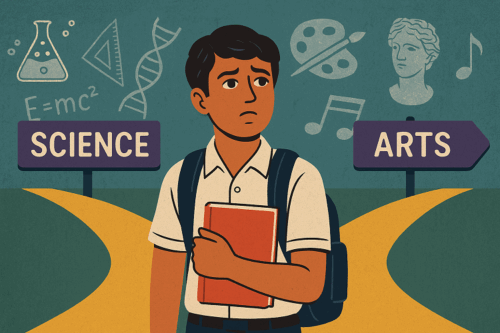
In a recent interview with Lallantop, Varun Grover—acclaimed writer, lyricist, comedian, and filmmaker—hit upon a truth so striking, it should’ve been plastered across school walls: India has lost its plot in nurturing innovators. And the reason? We’ve boxed our subjects—and our students—into separate lanes. Science on one side, art on the other. One wears lab coats, the other paints canvases. They rarely, if ever, meet.
Grover put it sharply: in India, we’ve created a caste-like hierarchy between subjects. Science students often carry the burden of “doing real work,” while arts students claim the higher ground of exploring life and meaning. The result? A deep-rooted disconnect. And it begins early—often in Class 11, when students are forced to pick a stream and silently abandon the rest of their interests.
But must a physicist give up poetry? Must a musician ignore algorithms?
It doesn’t have to be this way. At MIT, one of the world’s top science and tech universities, PhD students in Physics can take courses in music, design, or history—and earn credits for them. Why? Because innovation thrives where disciplines intersect. Because understanding how a flute works can teach you more about frequencies than a textbook diagram ever will.
Consider Steve Jobs, who credited a college calligraphy class for inspiring the Mac’s typography. Or Indian innovator Sonam Wangchuk, whose work in Ladakh seamlessly blends engineering with local art, architecture, and sustainability. His Himalayan Institute of Alternatives (HIAL) teaches future engineers and designers side-by-side, breaking the very silos our system has normalised.
Even Nobel laureate Richard Feynman once said, “I have a friend who’s an artist… He’ll hold up a flower and say, ‘Look how beautiful it is,’ and I’ll agree. But I can also see beauty in how the flower works—its structure, its physics. Science only adds to the beauty.”
And yet, in India, we continue to teach these as separate things. We train students to clear tests, not to create. We push them into IIT-JEE coaching at 13 and expect them to build world-changing ideas at 25.
This isn’t just an academic issue—it’s cultural. Our textbooks rarely reference architecture as both engineering and aesthetic legacy. Our school plays and science exhibitions are held in different corners of the building. Our awards are either for “Best Innovation” or “Best Performance”—never both.
The irony is painful. A land of classical music rooted in maths. A civilisation that built temples with astronomical precision. A country that once integrated dance, sculpture, and geometry with everyday life. And yet, we’ve chosen to modernise by compartmentalising.
It’s time we remember what Varun Grover reminded us of: the pyramid is both an engineering feat and an artistic marvel. And so is the human mind.
Let’s build an education system that stops asking children to choose between knowing and feeling, between numbers and narratives.
Let’s stop making them pick a lane—when the real magic happens at the crossroads.
Education
World Environment Day: Why Your School’s Environmental Education Needs a Cleanup
Education
Children’s Bird Walks to Connect Young Minds with India’s Rich Avian Diversity
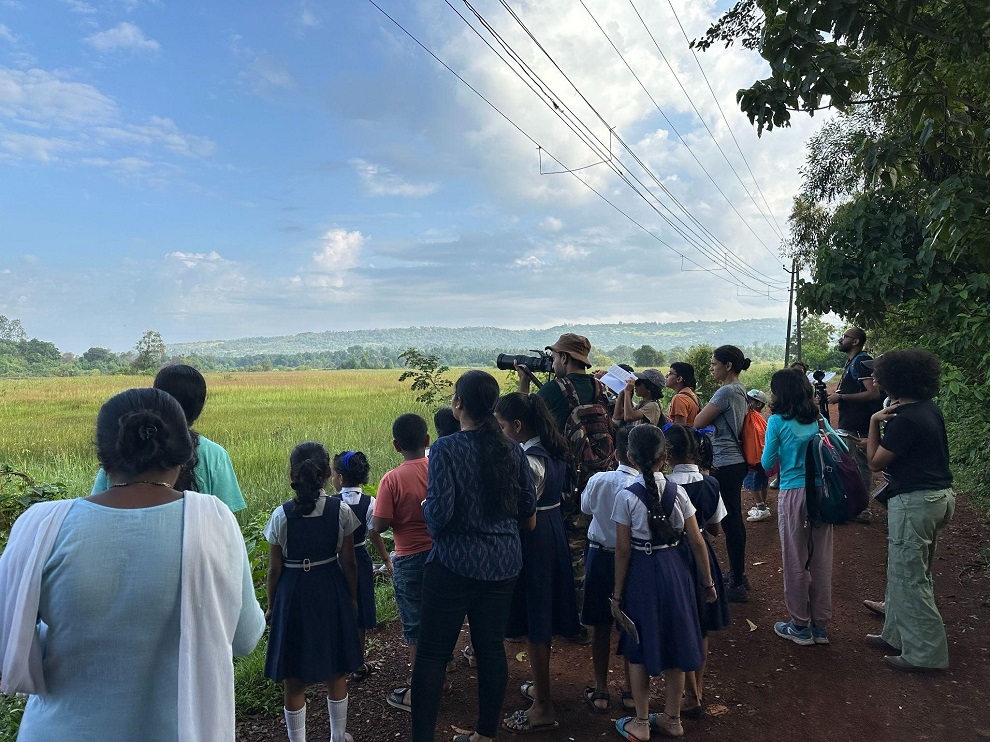
In an exciting initiative for young nature enthusiasts, Early Bird and Ataavi Bird Foundation are set to organise special bird walks for children during the Great Backyard Bird Count 2025. Scheduled for February 15th and 16th, 2025, these walks will take place in eight Indian cities: Bengaluru, Dimapur, Halol, Jaipur, Mangaluru, Ranchi, Trivandrum, and Ujjain.
Designed for children aged 9 to 13 years, the bird walks aim to nurture curiosity about birds and their habitats, providing an engaging introduction to birdwatching. Led by experienced nature educators, the sessions will help children identify different bird species, understand their behaviours, and develop a deeper appreciation for local biodiversity.
The Great Backyard Bird Count is a global citizen science initiative where birdwatchers of all ages observe and document bird species in their surroundings. The data collected contributes to worldwide studies on bird populations and helps scientists track migration patterns and conservation needs. This year, Early Bird is organising dedicated children’s walks as part of this initiative, encouraging young learners to explore nature firsthand.
Early Bird is a learning programme that brings children closer to birds and nature. The programme has impacted more than 3 lakh children throughout its 10-year existence. This is through the distribution of innovative educational materials on Indian birds, available in 10 Indian languages, besides English. Early Bird is a part of the Nature Conservation Foundation (NCF), a 28-year-old public charitable trust set up to contribute to the knowledge and conservation of India’s unique wildlife heritage.
Previous bird walks led by Early Bird’s expert educators have received enthusiastic responses. A parent from the Goa Walk 2024 shared, “Such an unbelievable and mesmerising variety of birds! Thank you for revealing these treasures in our everyday landscape!”
The event will take place at key nature spots in each city, including Avalahalli Lake (Bengaluru), Vadatalav Lake (Halol), Kishan Bagh Sand Dunes Park (Jaipur), and Akkulam Lake (Trivandrum). Partner organisations such as Coastal Karnataka Bird Watchers Network (CKBWN), Eco Warriors, Prakriti, and COCOON will collaborate to ensure an enriching experience for all participants.
Event Details
| City | Location | Partner Organisation | Date & Time |
|---|---|---|---|
| Bengaluru | Avalahalli Lake | – | 15 Feb 2025, 7:30 AM – 9:00 AM |
| Dimapur | PWD, Forest Colony Complex | Eco Warriors | 16 Feb 2025, 7:30 AM – 9:30 AM |
| Halol | Vadatalav Lake | COCOON | 16 Feb 2025, 7:30 AM – 9:30 AM |
| Jaipur | Kishan Bagh Sand Dunes Park | Prakriti | 16 Feb 2025, 7:30 AM – 9:30 AM |
| Mangaluru | NITK Campus, Surathkal | CKBWN | 16 Feb 2025, 7:30 AM – 9:30 AM |
| Ranchi | Jonha Park, Koynardih | Keystone Foundation | 16 Feb 2025, 7:30 AM – 9:30 AM |
| Trivandrum | Akkulam Lake | – | 16 Feb 2025, 7:30 AM – 9:30 AM |
| Ujjain | Triveni Eco Park | – | 16 Feb 2025, 7:30 AM – 9:30 AM |
How to Register
Registrations for the bird walks are now open. Interested participants can sign up at https://bit.ly/8cities8walks. Slots are limited and will be filled on a first-come, first-served basis.
This initiative provides a rare opportunity for students to engage with nature, learn about India’s diverse bird species, and contribute to an international conservation effort.
Edutainment
Word of the Year 2024: Can Teachers Keep Up With The Evolving Language of Gen Z?
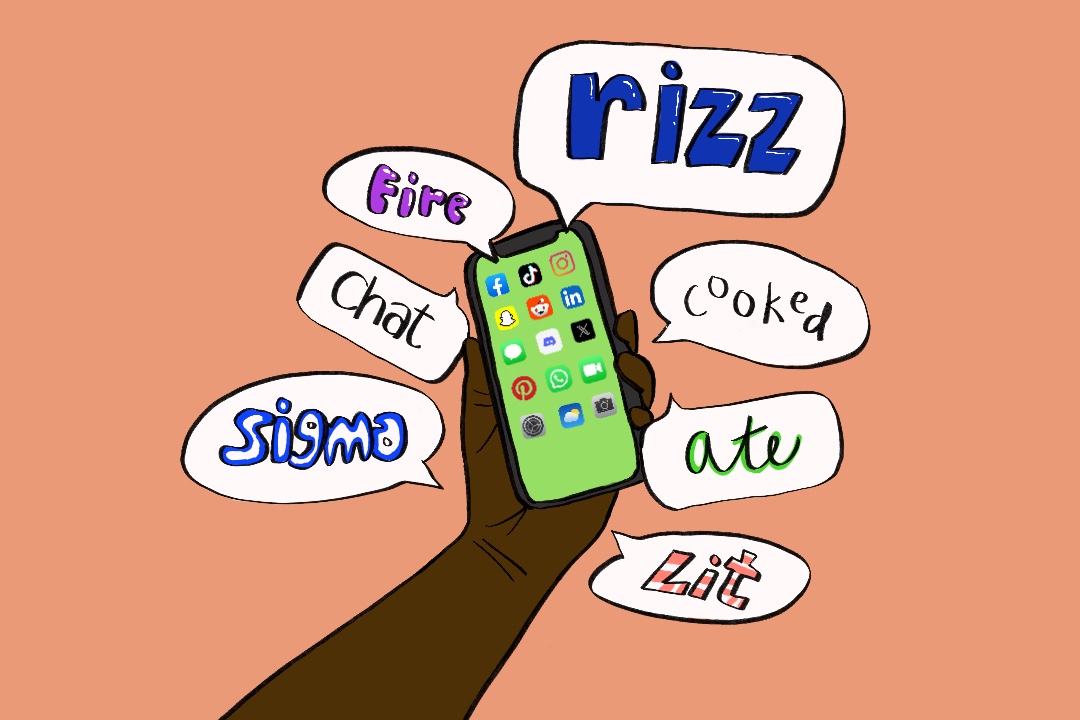
Language evolves at a rapid pace, and the younger generation—Gen Z and the emerging Gen Alpha—are taking it to new heights. Social media platforms like TikTok and Instagram have become hotbeds for linguistic innovation, where abbreviations, slang, and newly minted words emerge faster than ever before. Words like “brb,” “slay,” “sus,” and even Oxford’s Word of the Year 2024, “brain rot,” are part of their everyday vocabulary. But amidst this linguistic whirlwind, one question arises: Are teachers catching up?
A Gap in Communication
Imagine a classroom where a student says, “brb! Wanna use the washroom,” and the teacher pauses, unsure of the abbreviation. Such scenarios highlight a communication gap. Research consistently shows that effective communication between students and teachers fosters trust, engagement, and better learning outcomes. According to a 2022 study by Education Week, students who feel understood by their teachers are 45% more likely to excel academically and 30% less likely to skip classes.
However, understanding Gen Z’s and Gen Alpha’s linguistic trends isn’t just about learning a dictionary of slang—it’s about bridging a generational divide and fostering mutual respect.
Tackling the Language Gap
- Training Teachers on Evolving Language
One way to address the gap is to provide teachers with targeted training sessions that focus on the language trends of younger generations. These sessions could include decoding popular abbreviations, slang, and even cultural references that dominate social media. This approach can help teachers stay relevant and avoid miscommunication. However, with mounting academic and emotional responsibilities, many educators might find such training an added burden. - Building Relationships Through Interaction
A more organic solution lies in fostering better teacher-student relationships. By engaging in informal conversations with students, teachers can learn their language naturally. This approach not only helps teachers understand evolving slang but also humanises them in the eyes of their students, fostering trust and relatability. Interacting with students on their terms creates a classroom culture of mutual respect and understanding.
The Role of Language in Education
Language is more than just a tool for communication—it shapes relationships and builds cultural bridges. The words of the year like “manifest” and “brat” represent not only linguistic trends but also cultural shifts towards empowerment, individuality, and self-expression. Teachers who understand this language can better connect with their students, appreciating the unique values and pressures they face.
The Words of the Year 2024—‘brain rot’, ‘manifest’, ‘brat’, and ‘demure’—offer educators a glimpse into the psyche of today’s youth.
For example, ‘brain rot’ reflects Gen Z’s awareness of digital overconsumption, while ‘manifest’ underscores their optimism and drive for self-improvement. A teacher who grasps these nuances can integrate them into lessons and discussions, creating a more engaging learning experience.
Ultimately, understanding the language of younger generations is a two-way street. While teachers can make an effort to decode Gen Z and Gen Alpha slang, students too can adapt to bridge the gap. The key lies in fostering dialogue and mutual respect, ensuring that language differences become a point of connection rather than a barrier.
As language continues to evolve at a breakneck pace, the classroom must remain a space where both students and teachers feel heard and understood. By embracing change and prioritising communication, education can keep up with the times while maintaining its core values.
Edutainment
How Pop Culture is Making Reading Cool Again in Indian Classrooms: From Comics to Classroom Libraries
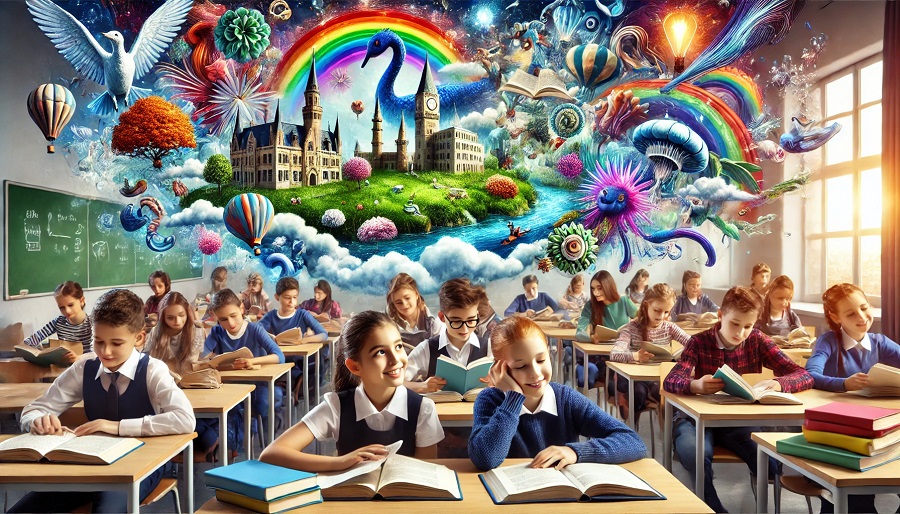
Alright, let’s be honest- reading was once that fun, interesting hobby of choice. There were children curled up with a book, immersed in the stories, dreaming themselves as warriors, magicians, or superheroes. However, at some point, reading became rather unpopular—children preferred binge-watching TV shows and spending hours on Instagram or TikTok rather than reading. But we see a light at the end of this tunnel, and it is glowing brighter with every passing day! It seems reading is cool again and we have pop culture to thank for it. From comics and graphic novels, fan fiction, and digital book platforms, literacy is going into the 21st century, and schools are slowly following (or at least attempting to).
And let’s begin with the simplest object possible—the so-called comics. Do you still recall how it was, when comics were considered as mere entertainment and could not be referred to as reading in any way? Well, news flash: they are now one of the most popular methods of making children read books once again. Whether it is Percy Jackson, Harry Potter or even Marvel and DC comics, children are fangirling/fanboying really hard for these narratives. Not only after school or in their leisure hours. And these stories are getting into classrooms as well. Schools have finally begun to acknowledge that comics and graphic novels can be as informative and engaging as the gigantic books that no one has any desire to open (and you know that that’s true).
School Libraries, which used to be dusty places with old and rarely read books, are now changing. Now, you can find shelves with graphic novels, books related to popular culture, and even manga! Schools are beginning to understand that if you put in the hands of children something fun and interesting, they will read it. Moreover, with visuals taking over every device we possess, it is only logical that children would be more attracted to books that have a strong visual component.
But it doesn’t stop there—teachers are getting creative too. Some schools have introduced events such as “Book Character Dress-Up Days” whereby children go to school dressed as characters from books and comic strips. Just think of an entire classroom filled with Percy Jacksons, Wonder Women, and Harry Potters—how cool is that? Not only is it a laugh but it also encourages imagination and creativity. Oh, and we desperately need that. Frankly, it is high time that schools stopped using the library period as an excuse for subject teachers to make up for lost time. Allow children to immerse themselves in stories, discover new worlds and think for themselves because if we do not, we are merely programming them to be little bookworms and robots. And that is a huge sign of trouble because innovation is the true power of the future.
Now, here’s the thing: we currently live in times when attention spans are shorter than ever and video content is massive. Children watch YouTube videos, Instagram stories, and TikToks every day, so it is a challenge to make them sit down and read a book. But that’s exactly why reading needs to be reimagined for this generation. The old paradigm of books and reading – curling up with a thick novel – just doesn’t work anymore. It is our imperative to introduce as much fun in reading as there is fun in the digital world children are so accustomed to.
Come other digital platforms such as Kindle, Scribblehub, Wattpad, and StoryWeaver. These platforms have made reading possible no matter where one is. Children are now avid readers of e-books, joining online reading groups, and even writing their own fan fiction. I mean, come on, how awesome is that? For instance, with Kindle, you have an entire library in the palm of your hand and that is something that appeals to today’s kids who are always attached to their gadgets. Rather than mindlessly scrolling through memes, they are swiping through pages of e-books, and that’s a victory in my book (literally).
Another massive factor in this reading revolution is the fan culture. Thanks to such platforms as Wattpad, children are not only reading; they are also writing! It means they are writing their own stories, posting them online where people from different parts of the world can read them, and interacting with other young writers. It is like having your own fan base and children are all about that now. Whether it is writing the sequels of their favorite TV shows or coming up with new fictional universes based on pop references, these children are redefining the concept of literacy. They are not passively reading stories, they are actively constructing them.
In essence, literacy is not just a process of learning to read and write but also involves the ability to read and write for a purpose. It is about participation, cognition, and imagination. But come on, the method of teaching and learning literacy cannot be the same as what is used in schools. We can no longer simply depend on the traditional ways of doing things. The world is dynamic and so is reading, which is a very important aspect of learning and knowledge acquisition. If the goal is to raise readers for life, and thinkers as well- then it is imperative that reading remains relevant. And thanks to pop culture, it seems that we are on the right track.
So, here’s to the schools that are waking up and smelling the coffee. To the teachers who are using pop culture to make literacy cool again. And to the kids who are picking up comics, joining digital book clubs, and writing their own stories. Because in a world dominated by technology, reading is not only the art of survival, but the art of success.
Education
Embracing Emojis in the Classroom: A Fun and Polite Approach to Modern Learning
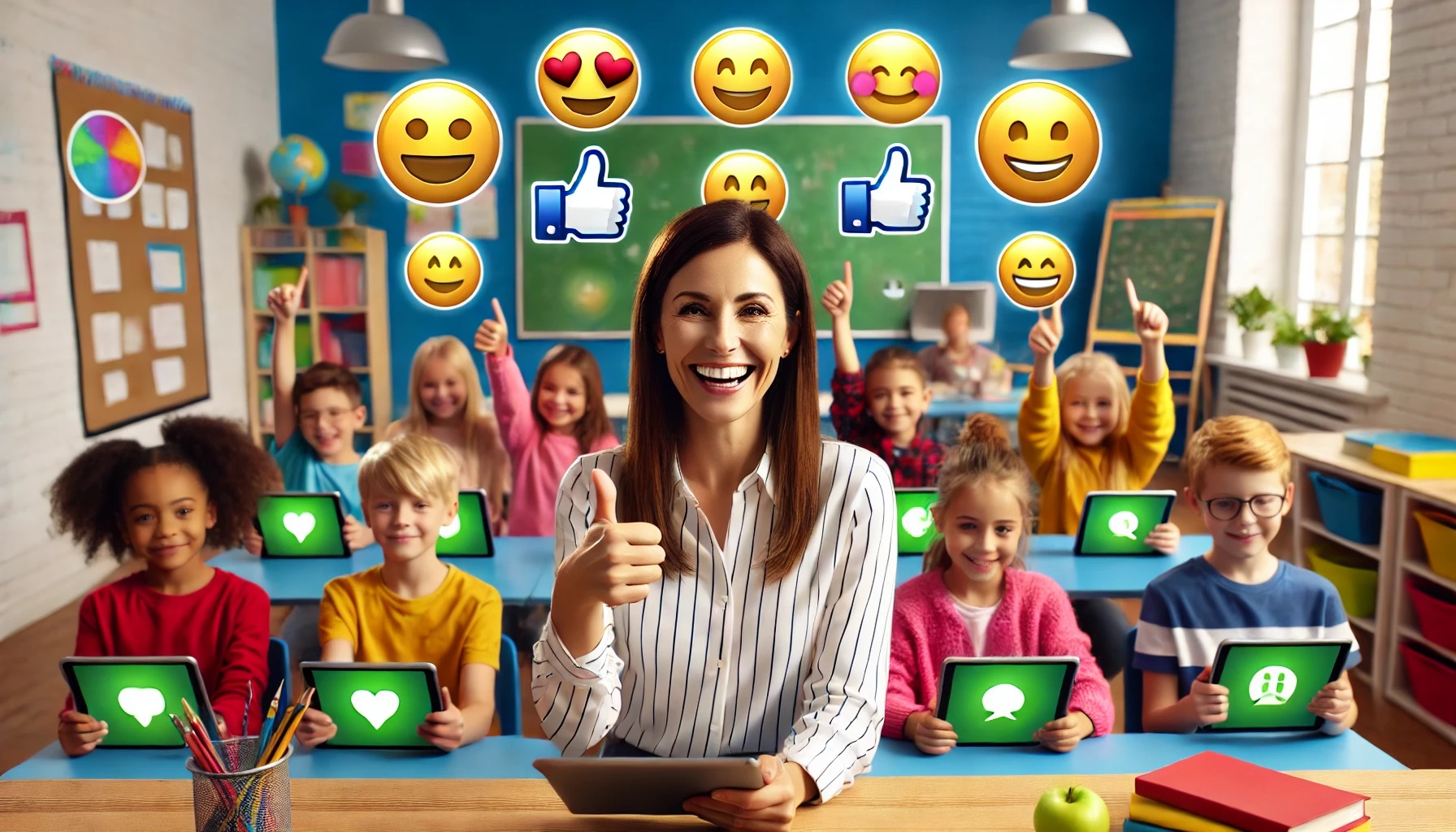
Today, on World Emoji Day, let’s celebrate these small, expressive icons that have become an integral part of our digital communication. While some argue that emojis threaten the sanctity of language, there’s a fun, quirky side to these tiny pictures that can actually enhance classroom interactions, making them more relevant, polite, and engaging.
Remember the thrill of getting a gold star on your homework? That star wasn’t just a sticker; it was a symbol of achievement, recognition, and encouragement. In many ways, emojis serve a similar purpose. They convey emotions and reactions succinctly and can add a personal touch to written communication. So, why not harness the power of emojis to make our classrooms more dynamic and student-friendly?
1. Enhancing Feedback: Traditionally, teachers use phrases like “good job” or “well done” to praise students. But imagine the added excitement if those words were accompanied by a clapping hands emoji 👏, a star ⭐, or even a trophy 🏆. Such visual cues can amplify the impact of positive feedback, making it more memorable and encouraging for students. Conversely, gentle reminders can be softened with a thoughtful emoji. For instance, a neutral face 😐 or a thinking face 🤔 could be used to indicate that a student might need to revisit a particular concept without causing undue stress or discouragement.
2. Encouraging Polite Communication: Emojis can also help maintain a polite and respectful tone in classroom discussions. For example, if a student disagrees with a peer, using a handshake emoji 🤝 or a smiling face 😊 can convey their differing opinion respectfully. This approach can foster a culture of kindness and consideration, crucial for productive and positive learning environments.
3. Making Learning Fun: Integrating emojis into lesson plans can make learning more interactive and enjoyable. Teachers can create emoji-based quizzes where students match emojis to historical events, literary characters, or scientific concepts. For example, an apple 🍎 and a book 📖 could be used in a quiz about famous inventors, prompting students to guess Isaac Newton. These activities not only make lessons more engaging but also encourage creative thinking.
4. Bridging Language Gaps: In classrooms with diverse linguistic backgrounds, emojis can serve as a universal language, helping bridge communication gaps. A thumbs-up 👍, a heart ❤️, or a smiling face 😀 can convey appreciation and support across different languages, fostering inclusivity and mutual understanding.
5. Digital Citizenship: As students increasingly navigate the digital world, teaching them about appropriate emoji use is crucial. Educators can incorporate lessons on digital etiquette, highlighting how emojis can enhance communication when used appropriately but can also be misinterpreted or cause misunderstandings if overused or used incorrectly.
6. Custom Emojis for Classroom Culture: Teachers can create custom emojis that reflect their unique classroom culture. For instance, a specific emoji could symbolize a class mascot, a special event, or a unique classroom achievement. This personal touch can strengthen the sense of community and belonging among students.
In conclusion, emojis are not a threat to language; rather, they are an evolution of it. They offer a unique and fun way to enrich classroom communication, making feedback more impactful, interactions more polite, and learning more enjoyable. So, on this World Emoji Day, let’s embrace these expressive icons and unlock their potential to make our classrooms brighter, kinder, and more engaging places to learn. 🌟🎉📚
Edutainment
Navigating Teen Emotions: The Essential Lessons of ‘Inside Out’
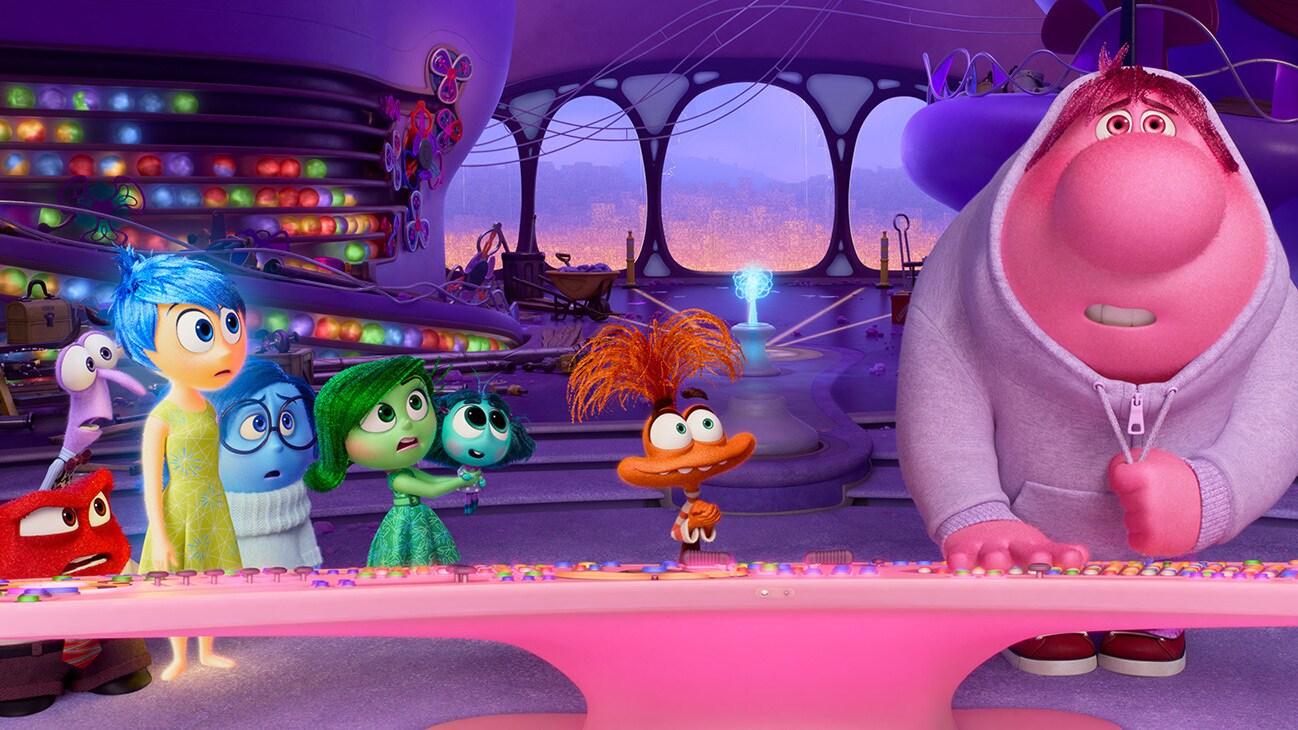
Amongst all other animated movies, ‘Inside Out’ not only stands out due to its new way of telling stories but also for its profound study into the human mind. It was a 2015 release from Pixar Animation Studios that looked at emotions in a very complicated manner, focusing on how an 11-year-old girl called Riley operates internally. As I saw the sequel “Inside Out 2,” in a theatre full of parents, kids, and young adults, it is important to revisit what we learnt in the original film and why it should be watched by teenagers and their parents.
“Inside Out” personifies five primary emotions: Joy, Sadness, Anger, Fear and Disgust. These are the characters that walk with Riley through life’s difficulties especially after her family moved to another city. This movie ingeniously demonstrates this emotional rollercoaster which accompanies such major changes making it relatable for children as well as adults.” Inside Out” helps adolescents who often cope with multiple emotional issues identify and understand that they are real.
Teenagers usually feel overwhelmed by growing up’s flood of emotions. The transformations accompanying the shift from childhood to adolescence are generally confusing and hard to express in words. “Inside Out” addresses these changes by showing that it’s normal to experience a wide range of emotions, sometimes all at once. Riley’s journey teaches teenagers that it’s okay to feel Joy, Sadness, Anger, Fear, and Disgust; these emotions are all part of the human experience.
Among the most touching messages of the film is that one must accept all the emotional states, not only positive ones. Joy, at first, tries to put Sadness aside and believes Riley should always be happy. Eventually however Joy realizes Sadness is vital for Riley’s emotional health. This could be a great revelation for teenagers who are mostly pressured to maintain an image of being ever-happy. “Inside Out” teaches them that it’s okay to feel sad and that acknowledging and expressing this emotion is a crucial part of emotional well-being.
As for parents, “Inside Out” serves as a gentle yet powerful reminder on why empathy and open communication are important in parenting. With our curriculum known for its single-minded commitment towards good grades and high moral standards, mental health has often been pushed aside. This movie indicates that one way of doing this is by understanding the children’s emotions’ needs. Parents can watch Inside out with an aim of learning how they can create an atmosphere where their children will have freedom to express themselves without fear.
The characters’ interactions in Riley’s mind might help parents understand how complex their teenager’s emotional world can be sometimes. As soon as they see that each emotion contributes to Riley’s overall wellbeing, parents may grow more patient and empathetic toward their children’s emotional struggles. This understanding is pivotal in nurturing a child’s emotional health and building a strong, supportive relationship.
“Inside Out 2,” introduces new emotions like Anxiety, Envy, Ennui, and Embarrassment, and makes it clear that the emotional landscape becomes more intricate as children grow into teenagers. The sequel delves deeper into the emotional challenges that accompany adolescence. A memorable scene from the upcoming film features Anxiety taking over from Joy, emphasising the need for more sophisticated emotions to navigate Riley’s more complex life. This transition is a stark reminder that growing up is not just about physical changes but also about evolving emotional needs.
One of the critical aspects of “Inside Out” and its sequel is the portrayal of anxiety. In the sequel, Anxiety explains that Riley’s life now requires more sophisticated emotions. This portrayal can help teenagers and their parents understand that anxiety is not inherently bad. Instead, it’s a natural response to challenging situations. The film can be an essential tool in discussing mental health issues like panic attacks, which are often overlooked in Indian communities.
By presenting anxiety as a part of Riley’s emotional toolkit, “Inside Out 2” can teach teenagers to listen to their inner voice and reassure themselves that everything will be okay, even in difficult situations. This understanding can help them develop healthier coping mechanisms and reduce the stigma associated with anxiety and other mental health issues.
Inside Out is more than just an animated film; it serves as an important resource for teenagers and parents alike. It allows viewers to have a nuanced understanding of emotions; stresses on embracing all feelings and assists them in becoming empathetic as well as encourages open communication. Now that Inside Out 2 has been released and is currently running at theaters across the country, this may be a good time to take the kids to watch the film or to revisit the original movie so that our kids and their guardians can watch it.
Edutainment
A Story About Turning Math Anxiety into Achievement

“Grow up dear and start solving your own problems”.
This popular meme floating on social media always triggers my thinking. It seems to be an age-old way to vent out the stress created by the subject. The last few decades have seen so much shift in the teaching-learning pedagogy, however, the math phobia remains. Researchers have proved that around 50 percent of the population is affected by math anxiety. It is more prevalent in women than in men. Also, it can start as early as age 5 when numbers are being just introduced. Philosophers and thinkers list various reasons for the same. Going through all those reasons I realized that teaching-learning practices are at their core. We need to update them and sync them with needs of the Gen X.
Thus began my journey of unlearning and relearning my math skill. I had to do it for my students, to ensure no stress classroom during math lessons. I started reading, exploring experimenting to have students love the subject. As Math skill will go with them beyond schooling years, for which they need a strong base.
Enters Shriya, whose smile seems to vanish as soon as she heard me say “Let us start with Math now”. Shriya, generally a regular and independent student, who actively took part in various class engagements frequently missed online math lessons. When approached, she very happily would blame it on the net or state some random excuse.
But then started her ordeal of physically being present in my class after the schools reopened post-pandemic. Her parents had already confided in me about her math phobia. Shriya too very innocently stated that “It’s so boring, I cannot even mute the call, close the screen, and have to listen to you”.
“OK Dear!” was my reply. “Let us make the class a little interesting for you. Would you like to give out numbers to classmates to solve?” With a heavy heart, she came forward and picked out the number card and flashed it for her peers to note and start their calculations. While I was busy interacting with other students Shriya sat silently looking at the numbers she had picked. Students around her were busy playing with numbers and trying to solve the given task. Once the class completed the task, we all thanked Shriya for taking those numbers out for us. As the task had turned out to be easy because of that. We collectively decided to make her the star of the day.
I started involving Shriya more and more during the math lesson, giving her responsibilities and involving her in various simple random tasks. To my surprise, Shriya would wait for taking out numbers for the upcoming math lessons. However, as a class rule, we could not give her a chance again, so she decided to sit and be on the other side. I quietly whispered into her years that she could pick her own numbers to do the task. And am glad I did that as she picked up easy numbers to solve the given task. Though she missed out on getting the golden star, which I give out for all correct, I asked her to draw out an ice cream cone for herself for a good attempt. “Do colour the cone with your favourite ice cream flavour” And she smiled.
During the morning circle time, I started with simple math based games, like boom bam, make a sentence, and math magic tricks with students. They really liked it and tried to guess the solution. They started asking friends from other sections and became math magicians. Shriya however still did not have the courage to approach peers as she was not confident with her calculations. So she took the trick home and tried it with her family. She practiced it a couple of times before she confronted them. I was her first audience. Even with her first few fails, I could read her eyes, how much she wanted to taste success here. As a result of emotional learning curriculum being done in school, peers too came forward and supported her. The encouragement she got from there boosted her morale so much that she could not stop talking about it in class.
Then came the concept of fractions where all-time favorite pizza is frequently used as an example. I used stories as a tool to introduce the concept. Students were involved in a follow up activity, which gave them hands-on learning experience of the concept. Once the basics was understood, I moved on to using pizza as an example and every time Shriya would solve fractions properly, I would message her mother, who in turn would cater for a pizza meal.
“My family sat around the table and I had to give one fifth of the pizza to all members”, reported Shriya, the very next day. Great dear, today try eating two thirds of apple pieces at home. I was confident that Shriya would be able to calculate how many pieces of apple to eat, as I had already messaged her mother to cut the apple into six pieces. Shriya was able to make 3 groups of the given apple pieces, but not able to decide how much to eat, so she send me a pic over WhatsApp. I just replied with a guiding question and next minute got a smiling picture with correct apple pieces next to a smiling face.
Shriya then volunteered to take a flip classroom for the next math lesson on fractions. She not only prepared herself for the explanation but also got worksheets ready for her peers. Shriya even gave out stars to all students who deserved them as per her, and in turn, she got the gold star from me. I had to encourage her for her efforts.
Next few concepts, saw Shriya taking a keen interest in the subject and trying her level best. Stumbling at places, this new Shriya did not mind redoing the task. She now had understood that understanding basics were the key to success and that one day she would get the gold star for all correct tasks.
I on my end kept on with my research and tried to make my lesson more engaging, interactive and one with which students could connect with. A mock market was set up in class to practice the concept of money. A number line was made on the floor for understanding decimals. Hopscotch was used for jumping on place values in the international number system. Students played the game of battleship after understanding the coordinates. The class game of Housie was customized to revisit and recap the concepts done. “Who will become the next millionaire” TV show was enacted in my class with a student sitting on the hot seat till they give correct answers to mathematical questions.
Finally came the day, Shriya not only earned her golden star, but it did not stop there, as she was now aiming to get the Math Marshall badge I gave out to students who not only mastered the concept but were ready for peer teaching. And the day she did that, I realized that Math had itself solved its own problem by being supportive in Shriya’s journey from a math hater to a math lover.
Authored By-
Smriti Sajjanhar,
PBL Coordinator,
Bugle Editorial Board, Genesis Global School, Noida
Edutainment
World Theatre Day: Let Theatre Arts Make Classroom’s Showtime Spectacular!

As we roll out the red carpet for World Theatre Day, celebrated every year on March 27, let’s shine the spotlight on the dazzling world of theatre arts in education—a realm where creativity knows no bounds, and every student gets a backstage pass to explore the endless facets of their personality. Theatre arts isn’t just about taking a bow on stage; it’s a grand production that includes acting, scriptwriting, directing, set design, costume creation, and even the magic of lighting and sound effects. It’s where the shy kid in class becomes a roaring lion, and the daydreamer directs their first masterpiece.
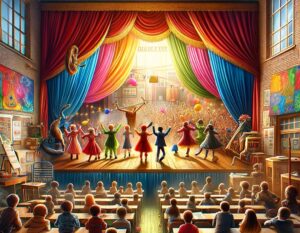
Diving into the eclectic mix that is theatre arts, students embark on a thrilling adventure into storytelling, embodying characters from realms far and wide. But wait, there’s more! Ever fancied crafting a world from scratch? Set design and costume creation offer a canvas for the wildest imaginations, turning dreams into tangible realities. And for the tech-savvy, lighting and sound effects provide the perfect playground to amplify the drama or set the mood. It’s like being the wizard behind the curtain, where a flick of the switch can transport the audience to another dimension.
But theatre arts in schools is more than a ticket to the creative Olympics; it’s a masterclass in life itself. Through the laughter of improvisation and the discipline of rehearsals, students learn the art of expression and the power of voice. Theatre teaches us to walk in others’ shoes, sparking empathy and understanding in a performance that extends beyond the stage and into the corridors of daily life.
And let’s not forget the standup comedians, the jesters of the modern age, who wield humour like a sword, cutting through tension and bringing light to the darkest rooms. Standup comedy, an exhilarating facet of theatre arts, schools students in the art of storytelling and the bravery of vulnerability, proving that sometimes, laughter truly is the best medicine.
Integrating theatre arts into the curriculum is like adding a pinch of magic to the mundane, transforming the classroom into a space where learning is an adventure, not a chore. It’s where students can be themselves (or someone else entirely) in a judgment-free zone, discovering their potential and pushing boundaries, one act at a time. Schools that embrace theatre arts offer students a safe space to explore their identities, confront societal issues, and express themselves authentically. Through theatre, students learn the importance of voice and agency, discovering their capacity to effect change in their communities and beyond.
So, as we celebrate World Theatre Day, let’s champion for theatre arts to take centre stage in schools. After all, in the grand theatre of life, we’re all players, and what better way to prepare for the world’s stage than by embracing the creativity, collaboration, and sheer joy of theatre arts? Here’s to the scriptwriters, the directors, the set designers, and the stars of tomorrow—may your light shine bright, both on and off the stage.
In the immortal words of Shakespeare, “All the world’s a stage,” and it’s high time we all play our part, ensuring that the wonders of theatre arts are not just an act, but a fundamental chapter in the story of education.
Education
Lessons Beyond a Cricket Pitch: An IPL-Inspired School Curriculum

“As we tune into the electrifying atmosphere of the Indian Premier League, where the clash of willow against leather sends pulses racing, we’re not just spectators of a thrilling spectacle. We’re witnesses to a living, breathing classroom where science dances with agility, leadership commands the play, and economics paints the bigger picture. Today, let’s embark on a journey beyond the boundary ropes, exploring how the IPL isn’t merely a cricket tournament but a dynamic, fun-filled educational odyssey.”
The Science Behind the Ball and Bat
At the heart of cricket lies a ballet of physics, each ball bowled a lesson in motion, energy, and force. The journey of a cricket ball, from the bowler’s hand to the bat, is a vivid demonstration of aerodynamics in action. Factors like air resistance, spin, and the Magnus effect collaborate to dictate the ball’s trajectory. A spinner’s delivery, curving through the air, isn’t just a challenge for the batsman but a practical example of physics. The materials of the game, especially the cricket bat made from willow, offer insights into material science, chosen for their capacity to absorb the shock of the ball’s impact and minimize damage to the hands.
The biomechanics of players, whether it’s a batsman executing a perfect cover drive or a bowler’s seam position at the point of delivery, are a testament to the human body’s potential when understood and harnessed through the principles of physics. Integrating these aspects into the curriculum can transform a standard physics lesson into a riveting session that connects students’ passion for cricket with the wonders of science.
Leadership on and off the Pitch
The IPL is a crucible of leadership, each match a case study in strategy, decision-making, and human management. Players like Virat Kohli and Rohit Sharma, with their tactical acumen and ability to inspire their teams, embody the essence of effective leadership. “Sports has taught me a lot. It helps reveal character. Sport teaches you about facing challenges, overcoming challenges on a regular basis which apply to every work of life.” Kohli once remarked, encapsulating the spirit of sportsmanship that transcends the cricket field. This philosophy can seamlessly be integrated into educational discussions, illustrating how leadership isn’t confined to high-pressure matches but is equally relevant in group projects, student councils, and beyond. MS Dhoni, a legendary cricketer and former Indian cricket team captain also believes that it is important to push every youngster to take up sports. “Be it, mentally or physically, sport teaches a lot to the students and that actually helps in practical life. Sports should play a big role in students’ life and everyone should be pushed to it,”
The Economy of Runs and Rupees
The IPL, a dazzling spectacle of cricket, is also a multi-billion-dollar industry that serves as a fascinating model for financial literacy and understanding the global economy of sports. The auction room, where players are bid on like prized artworks, offers a live demonstration of market dynamics and valuation. Sponsorships, media rights, and merchandising around the IPL introduce students to concepts of branding, revenue generation, and the economic impact of sports on national and global scales. It’s a practical lesson in economics, illustrating how supply and demand, investment, and financial management play out in one of the world’s most popular sports leagues.
IPL: A Classroom Without Walls
The IPL’s fusion of high-stakes cricket with lessons in physics, leadership, and economics presents an unparalleled opportunity to make learning interactive and engaging. It encourages students to see the relevance of their studies in real-world scenarios, thus igniting a passion for subjects that might previously have seemed abstract or disconnected from their interests.
Incorporating IPL-themed lessons into the curriculum can transform the traditional classroom, making learning a lively, participatory experience. As students analyse match strategies, calculate batting averages, or explore the economic model of the IPL, they’re not just learning; they’re engaging with the material in a way that’s both meaningful and enjoyable.
Cricket commentator and former cricketer Ian Bishop‘s words resonate deeply here: “The heart and soul of the game is what makes it so special.” In the context of education, the IPL embodies this spirit, proving that when you blend passion with learning, the classroom becomes a place of endless possibilities and discoveries.
The Indian Premier League offers more than just entertainment. It provides a vibrant, multifaceted platform for learning, encompassing physics, leadership, and economics, among other subjects. By viewing the IPL through an educational lens, we can inspire students to engage deeply with their studies, showing them that education, like cricket, can be filled with excitement, challenges, and lifelong lessons.
-

 Education2 months ago
Education2 months agoCBSE’s ‘Sugar Boards’ Initiative: Tackling the Sweet Crisis in Indian Schools
-
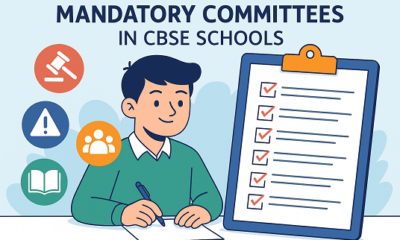
 Education3 months ago
Education3 months agoIs Your School Following These Mandatory CBSE Committees?
-
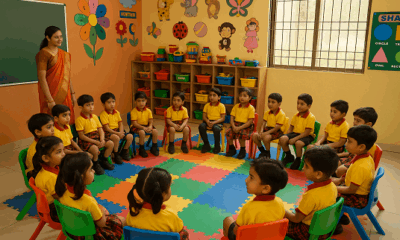
 Education3 months ago
Education3 months agoMaharashtra to Regulate Pre-Primary Education with New Law Aligned to NEP 2020
-
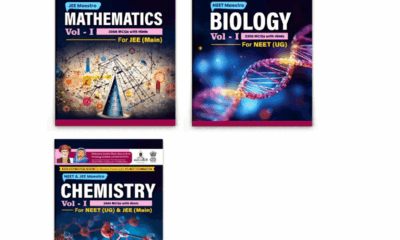
 Education3 months ago
Education3 months agoMAHAJYOTI’s Book Distribution Scheme to Empower 7,000 OBC Students Preparing for JEE/NEET & MHT-CET
-

 Education3 months ago
Education3 months agoChina Embarks on Ambitious AI-Driven Education Reform to Build a ‘Strong Education Nation’ by 2035
-
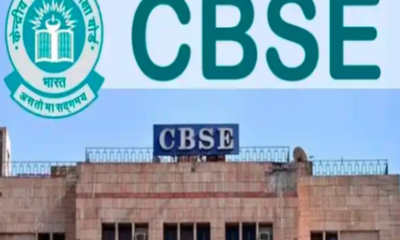
 Education3 months ago
Education3 months agoCBSE Introduces Mandatory Bridge Course for Classes 6 to 12 in Chhattisgarh Under NEP 2020
-
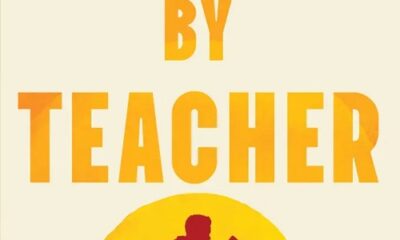
 Education2 months ago
Education2 months agoJohn King’s Book ‘Teacher By Teacher’: A Global Tribute to the Transformative Power of Education
-
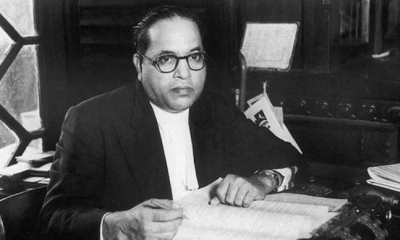
 Education3 months ago
Education3 months agoRewriting Ambedkar: Why Students Must Know the Man Beyond the Constitution
-
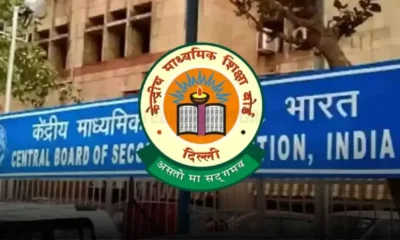
 Education3 months ago
Education3 months agoCBSE Mandates 50-Hour Annual Training for Teachers, Declares STEM as 2025 Theme
-
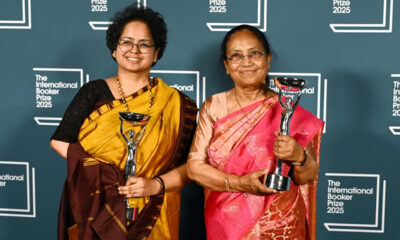
 Education2 months ago
Education2 months agoBanu Mushtaq’s International Booker Win Is a Wake-Up Call for Indian Schools to Reclaim Literature




